30 Wild Soviet Concept Cars and Prototypes
- Story Cars

- Aug 14, 2023
- 12 min read
Updated: Aug 19, 2023
Behind the iron curtain, Soviet engineers and designers dared to dream big, concocting a captivating array of concept cars and prototypes that pushed the boundaries of imagination and innovation. From hovercars to snow machines and futuristic supercars, the Soviet Union's automotive industry harbored an arsenal of wild creations that remained hidden from the world for decades. Let's dive into the forgotten realm of the wildest Soviet concept cars and prototypes that redefined automotive possibilities and still leave us in awe today.
1934 GAZ A-Aero
In the 1930s, as cars were reaching higher speeds, the need to study aerodynamics became evident. In the Soviet Union, remarkable progress was made in 1934 when the first domestic streamlined car, the experimental GAZ-A-Aero, was developed by designer Alexei Osipovich Nikitin. The project was initiated by the automobile department of the Military Academy of Mechanization and Motorization of the Red Army (VAMM RKKA) in collaboration with other organizations. Extensive theoretical studies and wind tunnel tests resulted in four streamlined body designs that were applied to the GAZ-A chassis to create the GAZ-A-Aero prototype. The new streamlined body showcased curved steel sheets on a wooden frame, teardrop-shaped wing coverings, and a V-shaped windshield. The GAZ-A-Aero demonstrated significant advantages over the standard GAZ-A model, with higher speeds, better dynamics, and improved fuel efficiency. Despite limitations due to the chassis design, the GAZ-A-Aero proved the benefits of streamlined bodies in increasing performance. This pioneering work set the foundation for future advancements in automotive aerodynamics and contributed to the development of modern streamlined cars in the post-war era.
1938 GAZ GL-1
In 1938, the GAZ GL-1 emerged as a remarkable endeavor by the Gorky Automobile Plant to elevate the speed bar for Russian cars. Tasked with this challenge, engineer Evgenii Agitov worked on the GAZ-M1 as the donor vehicle, which initially featured a four-cylinder, 3.3-liter engine producing 50 hp. With aspirations to break records, the engine was tuned, modifications were made to the body for reduced resistance, and unnecessary components were removed, resulting in a car weighing exactly one tonne. Eventually, in October 1938, GAZ test driver Arkady Nikolaev achieved a new Soviet Union record of 148 km/h with the GAZ GL-1.
Inspired by its success, Evgenii Agitov and his team continued refining the car, leading to the creation of a 3.5-liter, six-cylinder engine with increased power and better aerodynamics. By September 22, 1940, the GAZ GL-1 reached a remarkable speed of 161.9 km/h, significantly improving the Soviet record. The GL-1's advancements paved the way for more powerful engines in various vehicles, leaving an indelible mark on the Soviet automotive landscape. While plans for a third-generation GL-1 were thwarted by World War II, a faithful replica crafted by enthusiasts is now on display at a museum in Moscow, preserving the legacy of this groundbreaking Soviet speed icon.
1950 GAZ M-20 "Pobeda-Sport"
In 1950, the GAZ M-20 "Pobeda-Sport" made its mark in the Soviet sports scene when it appeared in the Torpedo Gorky sports club. A few homemade modifications were made to the cars, and it was during a test by Michael Metelev on the "Pobeda-Sports" N 11 that new speed records were established, reaching an impressive 161.211 km/h at a distance of 100 km. The pursuit of excellence continued, and in 1951, several enhancements were introduced, such as equipping three vehicles with rotary blowers "Rutz" and replacing carburetors for increased power and higher speeds. Another variant with an experimental four-cylinder 2.5-liter engine followed, showcasing the determination to push the limits of performance. Although the GAZ M-20 "Pobeda-Sport" was successful, it also laid the groundwork for future advancements, as these experiences proved invaluable in the development of other vehicles and even jet engines, leaving a lasting impact on the Soviet automotive and engineering landscape. The "Pobeda-Sports" went on to win three championships of the USSR, solidifying its position as the first truly successful domestic sports car in Soviet history.
1951 GAZ Torpedo (SG-2)
The SG-2 racing car, known as "Torpedo-GAZ," emerged in 1951 as an evolution from the "Victory sports" model designed by A.A. Smolin. Crafted with aviation techniques, its tear-shaped aluminum body replaced the original "Victory" design. Constructed with dural profiles and aluminum sheets, the car featured a bearing aluminum body. Its specifications included a 4x2 wheel formula weighing 1100 kg, a 2700 mm wheelbase, and dimensions of 6250 mm (length), 2070 mm (width), and 1200 mm (height). Powered by an M-20 4-cylinder carbureted engine with a volume supercharger, it boasted 2487 cm³ displacement, 105 hp at 4000 rpm, a top speed of 118.7mph (191 km/h), and accelerated from 0 to 1000m in 33.7 seconds.
1951 ZIS-112/1
In 1951, Russian automaker ZIS unveiled the ZIS-112/1 Concept Car, dubbed the "Cyclops." Designed by Valentine Rostkov, this two-seater prototype drew inspiration from the 1951 GM LeSabre concept car. It featured a removable hardtop and was powered by a 140hp V-8 engine from the ZIS-110, later upgraded to a potent 186hp V-8 experimental engine with four carburetors. The ZIS-112/1 participated in national competitions, undergoing modifications to enhance performance, including a shortened length and reduced weight from its original 6-meter frame. This revolutionary concept car symbolized Russian ingenuity and futuristic design, leaving a lasting impact on the automotive industry.
1953 GAZ Armored SnowMachine Prototype

Very little is known about the 1953 GAZ Armored SnowMachine Prototype. What's visibly known is that it shares many similar traits to the RF-8 (GAZ-98) Aerosled of WWII, which was designed in 1941 and used from 1942-1943. The main difference being the armored snow machine is enclosed vs. open, has track vs. being self-propelled and could tackle tougher snow terrains vs. flats. Below are images and a summary of the RF-8 (GAZ-98) Aerosled.
The RF-8 (GAZ-98) is a self-propelled sleigh powered by an internal combustion engine and equipped with a pushing propeller engine. It was designed for travel on snow and ice, initially developed by the OKB of the NKRF and later produced by GAZ "Bus Plant" (GZA). It went through modifications, becoming the RF-8-GAZ-98, also known as GAZ-98 and 743-98. These snowmobiles played a crucial role in World War II, particularly in 1942-1943, being utilized for tasks such as reconnaissance, guarding, transportation of troops and weapons, and patrol services in snowy terrains. The design and utilization of these vehicles were essential for traversing Russia's vast snowy landscapes during wartime.
1954 GAS-TR “Strela”
The rare 1954 GAS-TR "Strela" was characterized by its unique design, resembling a bomber plane, and was notable for being powered by an aircraft engine. However, due to its rarity, there is limited information available about this intriguing vehicle beyond these distinctive features.
1955 NAMI-050 “Belka” (Squirrel)
NAMI, a leading institution for automotive research in Russia, has a century-long history of significant contributions to Soviet car design, including the first Soviet-made car, NAMI 1. Amid the emergence of the Soviet auto industry, NAMI continued innovating with various concept cars, including the NAMI-050 "Belka" (Squirrel) developed in 1955. Inspired by the NAMI-013 and focusing on a rear engine cab-forward design, the NAMI-050 aimed for efficiency and spaciousness. Despite its advanced design and potential to elevate the Soviet auto industry, it faced resistance due to diversion from military efforts, leading to limited development and eventual discontinuation.
1955 ZIS-112/2

The ZIS-112/2, constructed in 1955 for the 1956 racing season, stands as a remarkable achievement in Soviet sports car history. Developed in adherence to FIA sports car regulations, this sleek racing marvel featured a lightweight fiberglass body and housed a potent 6000cc engine capable of producing 170 horsepower at 3500 rpm, propelling it to a top speed of approximately 200 km/h. In 1956, the skilled driver Boris demonstrated the car's prowess by securing an impressive 3rd place in the Kurbatov USSR championship, further solidifying the ZIS-112/2's position as a competitive and formidable contender in the racing circuit. The car's performance and achievements showcased the engineering excellence of the Soviet automotive industry during that era, leaving a lasting legacy in the annals of motorsport history.
1955 Zveda 5
The Zvezda 5, a rare Soviet car from 1955, boasted a distinctive 0.245-liter two-cylinder engine that generated an impressive 50 horsepower at 7200 RPM. With a compact transmission of 3 gears, a length of 3.2 meters, and a remarkably low curb weight of 360 kilograms, it was designed for agility. This unique vehicle could achieve a top speed of 124 mph (200 km/h), showcasing remarkable performance for its time.
1956 Moskvitch G2
The 1956 Moskvich G2, initially a modified G1 car with a streamlined aluminum body, was built for speed records. In the late 1950s, it participated in various circuit and point-to-point races, with Evgeny Veretov winning the 2500cc single-seater championship race in 1959. Yuri Chvirov achieved three long-distance speed records in the 1100 cc class in 1956. The car, produced in 1956, was powered by a Moskvich 405 engine (later Moskvich 407), featuring a single camshaft and 2 valves per cylinder. Designed by Igor A. Gladilin, it had a rear engine position, weighed 660 kg, and reached a maximum speed of 223 km/h.
1956 ZIS-112/3

In 1956, the third iteration of the ZIS-112, sharing the chassis with the ZIS-112/2, emerged as a remarkable engineering feat. Distinguished by a distinct engine, this version harnessed the power of a V8 engine originally developed for the experimental ZIL 111 limousine, boasting an impressive output of 220hp. Although it did not undergo extensive production, the ZIS-112/3 left an indelible impact on Soviet automotive advancements, exemplifying the nation's unwavering commitment to engineering excellence and innovation.
1957 Zveda 6

The 1957 Zvezda 6 car featured a 245 cm³ engine producing 54 hp at 7200 rpm, with a 4-speed transmission. Despite a lightweight 420 kg curb mass, it achieved a remarkable top speed of 124.3 mph (200 km/h). Notably, the Zvezda 6 set two world speed records, highlighting its impressive performance and innovation.
1960 Hadi-5

The Hadi-5, introduced in 1960, featured independent suspension on all wheels, a 4-cylinder 3000 cm³ engine producing 126 hp at 4,500 rpm, 3-speed transmission, 4.25 m length, 550 kg weight, and a remarkable top speed of 290 km/h.
1962 GAZ 16A Hover Vehicle
During the Cold War, the Soviet Union pursued various research projects for military advantage, leading to the unveiling of intriguing prototypes, some of which were classified. Among these, the GAZ 16A stands out. Named after the Gorky Automobile Factory, which specialized in vehicles like trucks and amphibious vehicles, the GAZ 16A was an unusual creation. Developed in the 1960s, it featured a usable hovercraft body with front and rear propellers for lift and large propulsion propellers for horizontal movement. Despite global efforts in air cushion vehicle development, economic limitations and limited application areas led to minimal success in bringing the concept to fruition.
1964 VNIITE-PT

Founded in Moscow in 1962, the Soviet research institution VNIITE specialized in industrial design. With a mission to pioneer unique design and engineering methodologies within the USSR, their efforts extended to scientific domains like atomic studies and transportation. Employing over 10,000 experts within a few years, VNIITE pursued novel projects, epitomizing their commitment to advancing Soviet industries.
Among their notable projects was the futuristic VNIITE-PT taxi concept, unveiled in 1964. This sci-fi-inspired design was based on a Moskvitch 408 platform, producing 50 hp with a top speed of around 65 mph, fitting for urban settings. Combining futuristic and vintage aesthetics, the VNIITE-PT featured a practical, spacious cab-forward layout. Although it never progressed to production, the VNIITE-PT encapsulated the visionary aspirations of Soviet designers during the 1960s.
1972 IZh-13 "Start"

The IZh-13 "Start" was a Soviet car introduced in 1972. It was designed and manufactured by Izhmash, a Russian company primarily known for producing firearms. The IZh-13 was a compact car with a unique appearance, featuring a front-wheel-drive layout and a small 0.9-liter engine. It had a distinctive design with a squared-off front end and a boxy body shape. The car was intended to be an affordable and practical option for Soviet consumers. However, the IZh-13 "Start" faced various technical and quality issues, which limited its success. It's considered one of the less successful models in Soviet automotive history, and production was relatively short-lived.
1973 IZh GranTurismo Prototype
The 1973 IZh GranTurismo Prototype stands as a unique and intriguing example of an all-terrain crossover/coupe. Developed by Lada Izhevsk, a subsidiary of the automotive manufacturer AvtoVAZ headquartered in Izhevsk, Russia, the prototype showcases an innovative approach to vehicle design. Lada Izhevsk's roots trace back to its days as a subsidiary of Izmash, operating under the IzhAvto brand. During this phase, the company was involved in producing a range of vehicles, including motorcycles and automobiles. The 1973 IZh GranTurismo Prototype likely embodies the creative spirit and experimental mindset of that era, attempting to blend elements of off-road capability with coupe aesthetics.
1975 IZh-19 ‘Start’
The IZh-19 "Start" was a Soviet car introduced in 1975 by Izhmash, a Russian manufacturing company. It aimed to be a budget-friendly option for consumers, following the same concept as its predecessor, the IZh-13. The car featured a compact design with a front-wheel-drive layout and was powered by a small-displacement engine. However, similar to the IZh-13, the IZh-19 faced various technical and quality challenges that impacted its success. It didn't achieve significant popularity, and its production run was relatively short. The IZh-19 "Start" is considered another example of a less successful model in Soviet automotive history.
1976 VAZ-Porsche 2103
In 1976, the collaboration between Porsche's chairman Ernst Fuhrmann and Soviet automotive industry minister Viktor Polyakov yielded the VAZ-Porsche 2103, a project born from a failed partnership. The intended facelift for the existing Lada model resulted in Porsche revising the suspension, interior, and exterior. Notably, the exterior metal brightwork was replaced with plastic, giving it a distinctive look of its era. In hindsight, the VAZ-Porsche 2103 reflects the design trends of its time.
1977 Yuna
Yuna, a homemade car envisioned by engineer and car enthusiast Yuri Algebraistov in 1969, was finally assembled in 1977. Although it earned considerable acclaim and secured multiple awards at international exhibitions, the car didn't enter large-scale production. Just two Yunas were constructed, with one surviving to the present day. Remarkably, this enduring vehicle has been on the road since its inception in 1977 and has accumulated over half a million kilometers in mileage.
1981 Lada X-1

The 1981 Lada X-1, a concept car developed by Lada, showcased innovative design elements that foreshadowed modern MPVs. With a sleek, aerodynamic shape, it featured headlights positioned near the windscreen, reminiscent of the later Fiat Multipla. Spanning a length of 4.2 meters, slightly longer than the Volkswagen Golf Mk2, and with a height comparable to an ordinary station wagon, the X-1's layout allowed flexibility in chair movement and rotation. This forward-thinking concept car offered a glimpse into the future of practical and adaptable vehicle design.
1982 Lada X-2 Concept

The 1982 Lada X-2 Concept stands as a continuation of the innovative pursuit initiated by its predecessor, the 1981 Lada X-1 Concept. Both prototypes were envisioned by VAZ as explorations into the minivan category, even though neither advanced beyond the plasticine model stage. With a focus on compactness, the X-2 aimed to refine the minivan concept further. Similar to the X-1, a full-scale plasticine mock-up was created to bring its design to life. Additionally, a 1:5 scale model with glazed windows was meticulously crafted, capturing the concept's essence for visual representation.
1982 Laura Prototype

In 1982, within a modest workshop on the outskirts of Leningrad, Dmitry Parfenov and Gennady Hainov embarked on the creation of their own car, which they named "Laura." Remarkably, this endeavor diverged from the norm, as the car was constructed with minimal use of factory parts – even its engine was a unique creation by the two enthusiasts. The car's excellence garnered recognition from then-General Secretary of the Communist Party, Mikhail Gorbachev, and it proudly participated in numerous international exhibitions. Regrettably, despite its acclaim, "Laura" remained a one-of-a-kind creation and was never mass-produced.
1982 Pangolin GT Prototype
The 1982 Pangolin GT Prototype, an emblem of Soviet automotive ingenuity, emerged from the visionary mind of Alexander Kulygin. Powered by a Lada 4-cylinder engine, the prototype's 62 horsepower and unique design, including a targa-style roof and conventional doors, exemplified Kulygin's commitment to pushing automotive boundaries. Despite the collapse of the Soviet Union, Kulygin's journey led him to the United States, where he continued his automotive legacy by producing kit cars. Tragically, his life was cut short by a car crash in 2004, yet his enduring impact is marked by the Pangolin GT Prototype's embodiment of innovation, resilience, and the enduring allure of unique vehicles in shaping automotive history.
1986-1987 NAMI Ohta Concept

The NAMI Okhta, created during 1986-87 at the Leningrad Laboratory of Advanced Prototyping of Light Vehicles by NAMI (Central Automobile Research Institute), stands as an intriguing concept car. This vehicle had a capacity for up to seven occupants, featuring removable second and third seat rows, along with a front seat that could rotate 180°. Notably futuristic for its time, the Okhta included a multiplex system, an advanced feature within a Soviet car. Although only one example remains, painstakingly restored after an accident, it is now showcased in a museum as a unique artifact of automotive innovation.
1985-1988 AZLK - 2144 Istra
The Istra, a standout creation from the renowned AZLK, stands as a captivating development. Emerging between 1985 and 1988 under the "Istra" project, this car boasted notable features such as an automatic transmission, a fuel-efficient diesel engine (3-cylinder turbodiesel ELKO with 68 hp), and standard air conditioning. However, despite these promising attributes, the project remained confined to the conceptual stage and was never realized. Today, an abandoned AZLK plant hosts a prototype of the Istra, serving as a reminder of its intriguing but unrealized potential.
1988 Moskvitch 2141 KR

The Moskvitch 2141 KR, a part of Group B rally car history, signifies the powerful racing class. Group B revolutionized WRC racing, allowing manufacturers to create agile and potent rally cars. While renowned cars like the Lancia 037 and Audi Quattro S1 are known, Soviet involvement is often overlooked. The Moskvitch 2141 KR, a modified version of the Moskvitch 2141, was designed to compete with race-focused changes and 170 hp power. Unfortunately, the ban on Group B racing halted its progress, preventing it from competing in the WRC circuit despite its potential.
1991 AZLK-2143 "Yauza"
The AZLK-2143 "Yauza," conceived in the late 1980s by the AZLK automobile plant, aimed to be the fifth-generation replacement for the "2141" and "2142" "Moskvich" models. Characterized by a distinctive wedge-shaped profile and non-lowering double side windows, the experimental version of the "Yauza" was readied in 1991 and featured design elements that influenced later models, including the VAZ-2110. Despite producing only three prototypes, the "Yauza" prototype showcased a visionary design. However, the plant's focus ultimately shifted towards refining previous generation models, leading to variations like elongated or shortened bodies, revamped fronts, and upgraded interior options.
1991 Moskvitch 2139 Arbat Minivan Concept
The Moskvitch 2139 Arbat minivan, a Soviet concept developed in 1991, aimed to accommodate up to seven passengers. This minivan showcased innovation within the Soviet automotive industry, offering practicality for larger passenger groups. The Moskvitch brand, known for its significance in Soviet and Russian automobile history, produced vehicles under AZLK from 1946 to 1991 and later experienced a resurgence in 2022. The term "Moskvich" itself translates to "a native of Moscow," underscoring the brand's origin and heritage. The minivan remains a testament to the brand's historical impact and continued innovation.
Sources
https://www.hobbydb.com/marketplaces/hobbydb/catalog_items/1950-gaz-m20-pobeda-sport#google_vignette
https://dyler.com/blog/453/the-gaz-gl-1-a-soviet-speed-record-holder
https://kustomrama.com/wiki/ZIS-112
https://oldconceptcars.com/1930-2004/gaz-torpedo-1951-2/
https://www.realhistoryonline.com/ground/gaz98-aerosled/
http://www.dlg.speedfreaks.org/archive/cars/moskvich/g2.php
https://diecast.org/community/1_43/1962-gaz-16a-hover-vehicle-by-autocult/








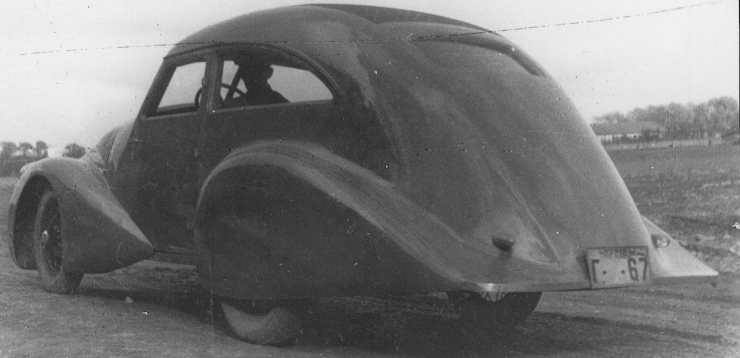














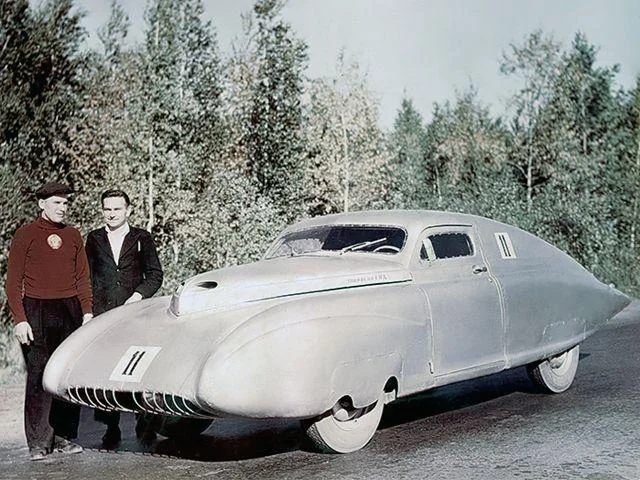
















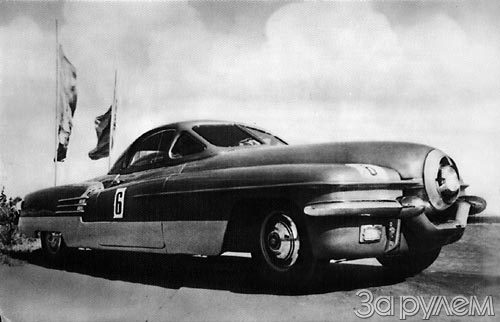






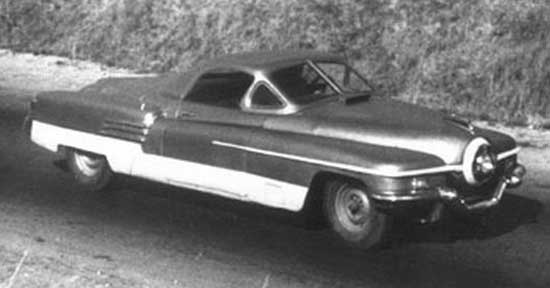

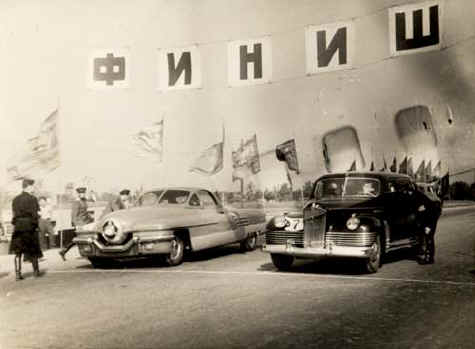
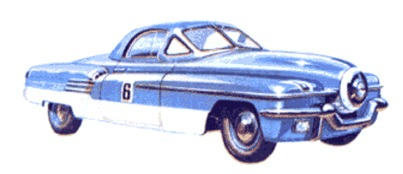
































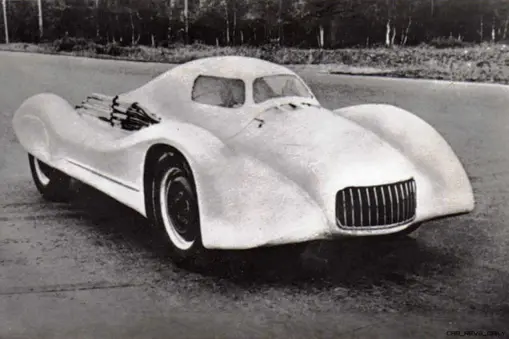
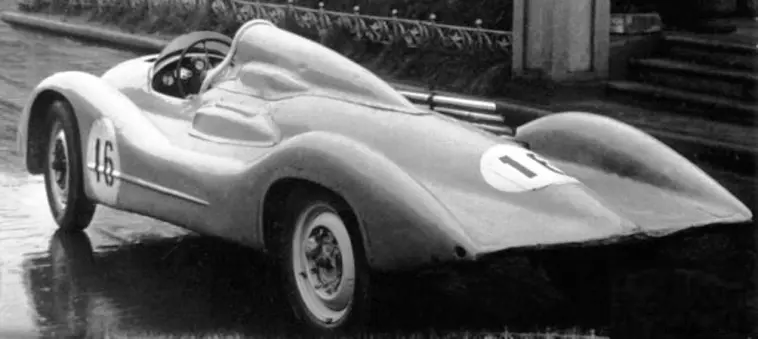
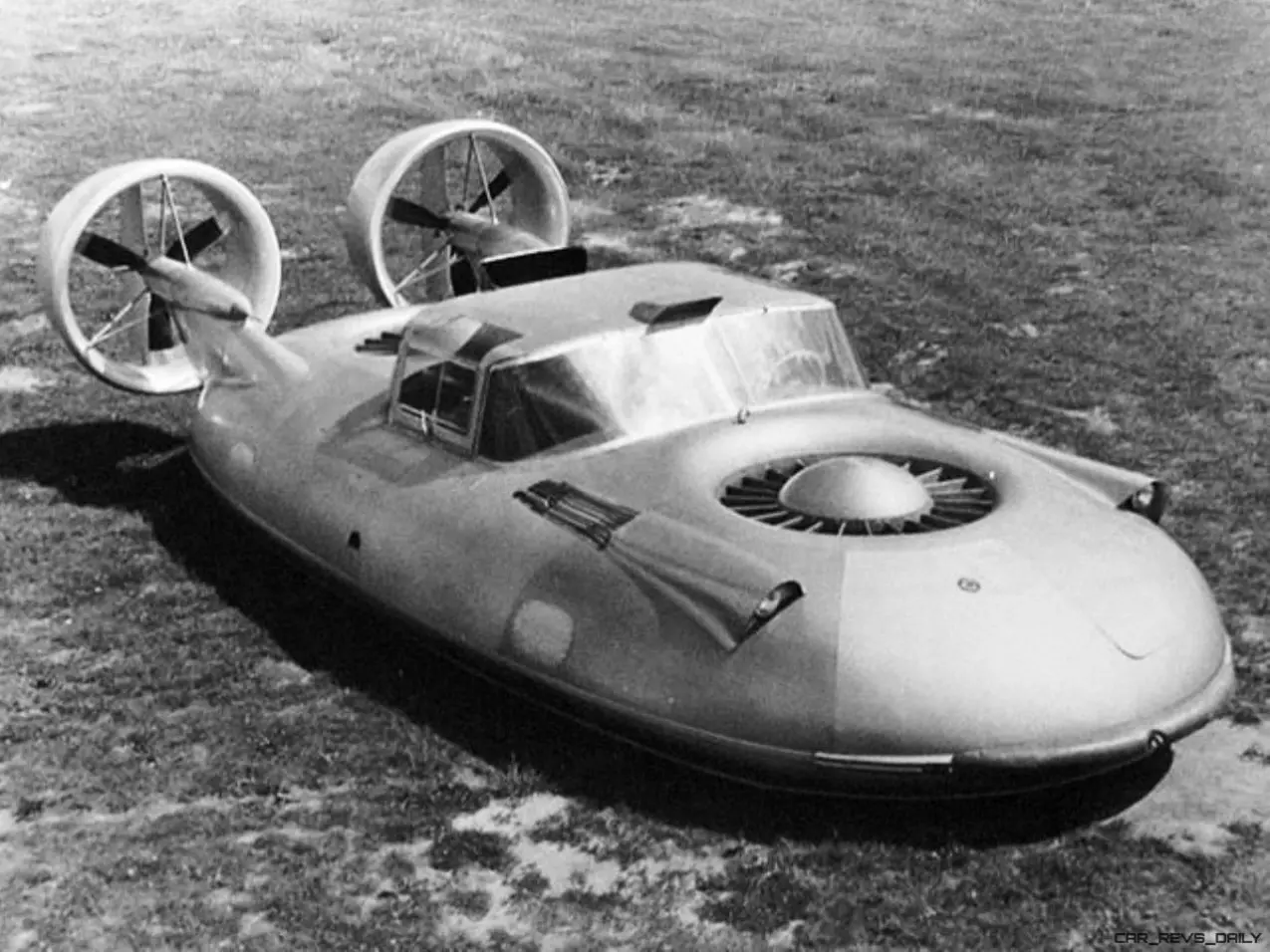


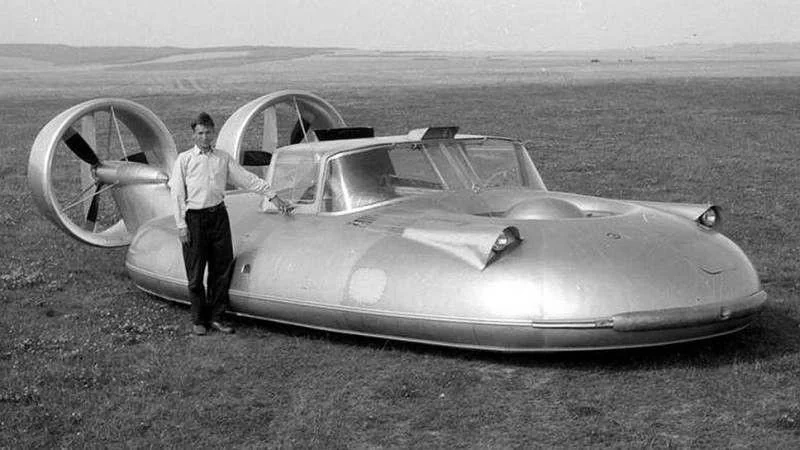



































































































Comments